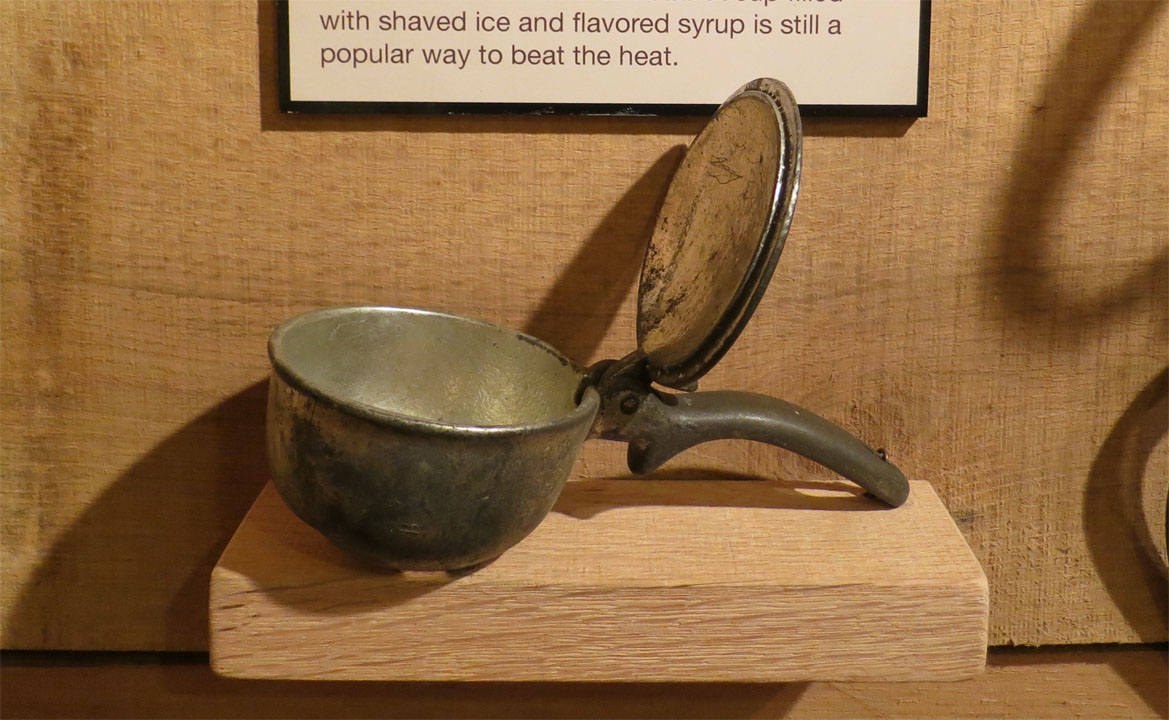Historic Ice Harvesting in Woods Hole
Ice at Home
Ice Boxes
Ice boxes appeared in English and American homes shortly after the ice trade developed early 1800s. The hollow walls of wooden ice boxes were insulated with sawdust, cork or dried seaweed and lined with tin, zinc, porcelain tile or opal glass. Ice would be delivered once or twice a week or it could be purchased at an ice-house.
Cold air inside the ice box circulated around the food on nearby shelves allowing it to stay fresh. Some models had spigots for draining ice water from a catch pan or holding tank. Other models, like the one in this exhibit, had a drip pan that was placed under the box that had to be emptied once or twice a day.
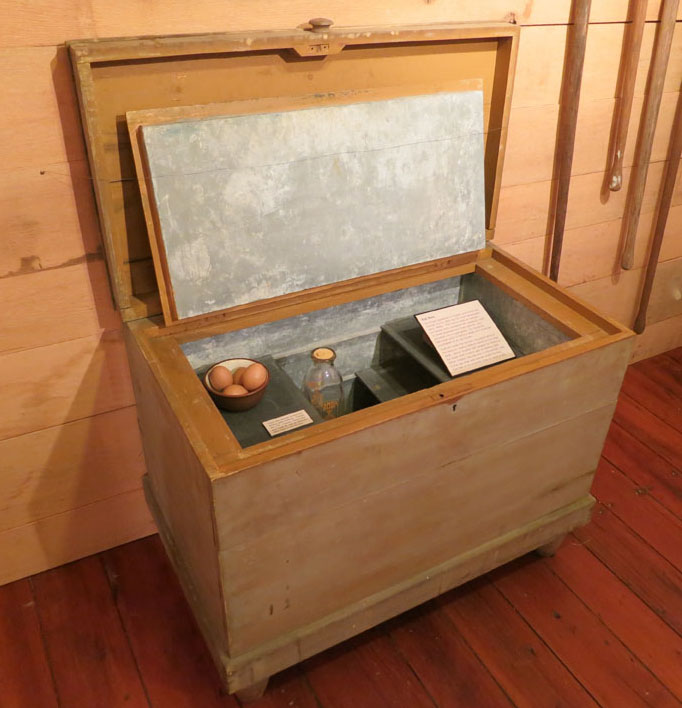
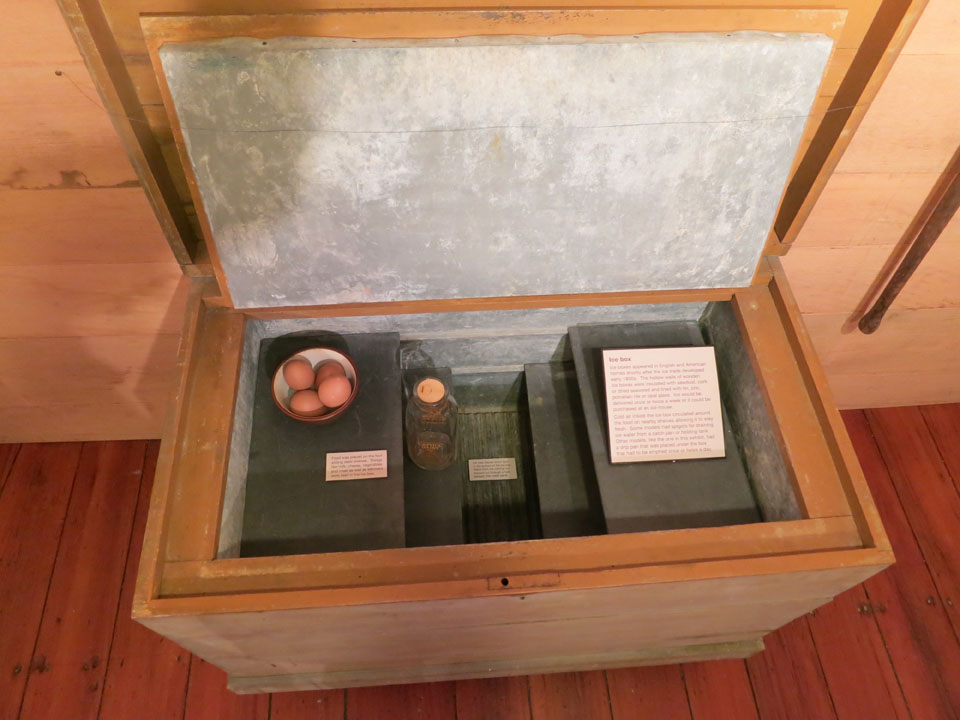
Ice was placed in the bottom of the ice box. Water from the melting ice dripped out through a hole beneath this metal panel. Food was placed on the four sliding slate shelves. Things like milk, cheese, vegetables and meat as well as leftovers were kept in the ice box.
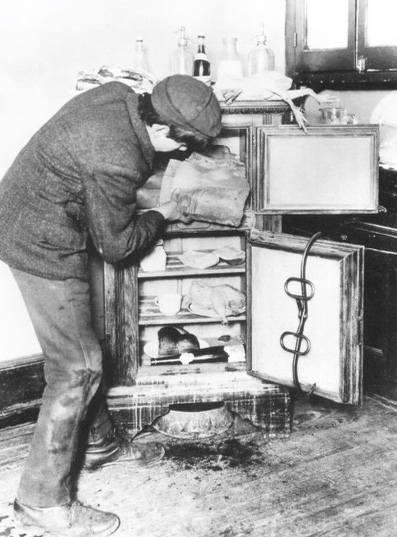
This delivery man has hung his tongs on the ice box door. A drip pan can be seen below.
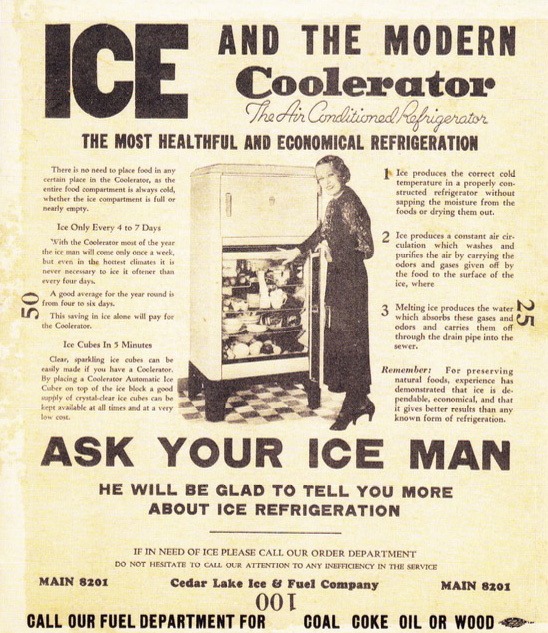
A "modern" ice box.
Ice Shavers
With this handy kitchen tool people made their own snow cones. Under the hinged top there are pointed teeth that scraped the surface of an ice block to create shaved ice for a summer treat. A cup filled with shaved ice and flavored syrup is still a popular way to beat the heat.
